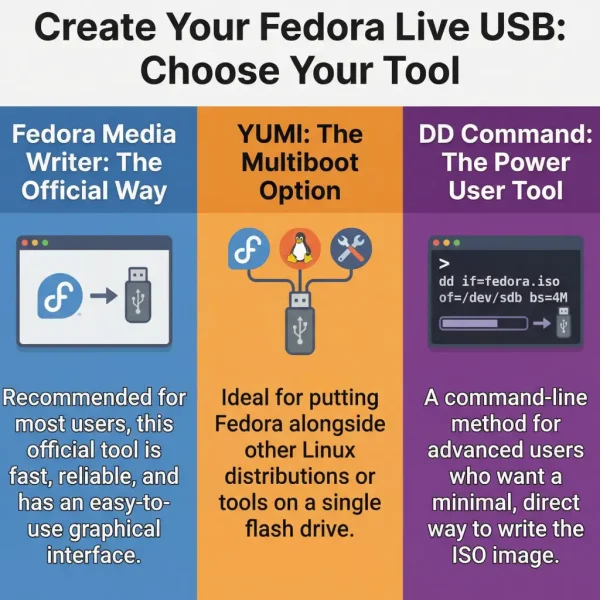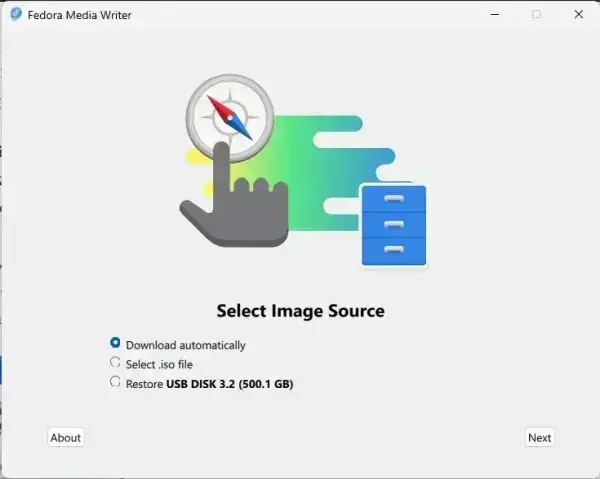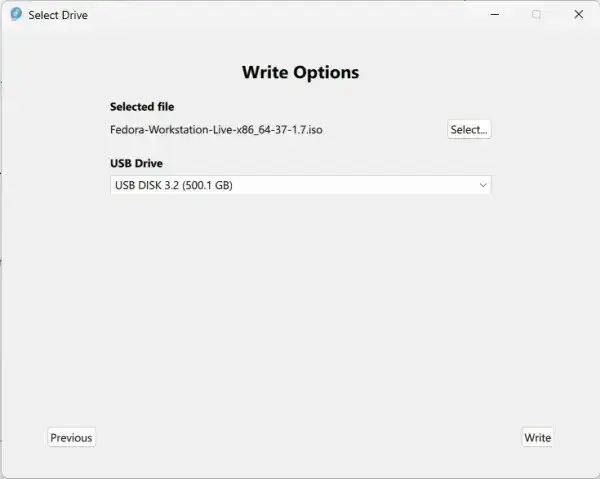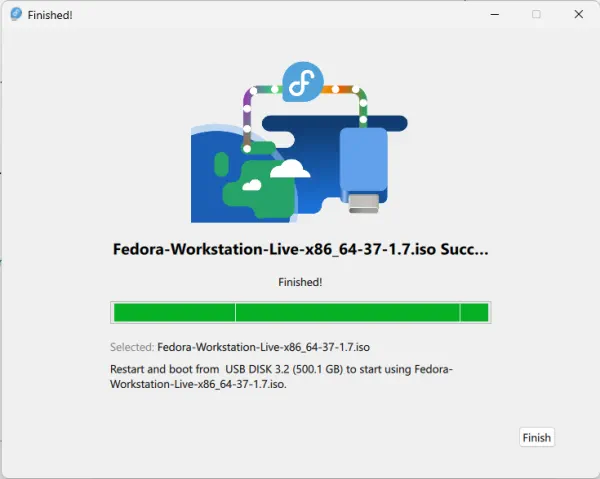Easily Create a Fedora Live USB: This simple tutorial explains how to install and boot Fedora Linux from a flash drive using the Fedora Media Writer, YUMI Multiboot USB Creator, or the Linux dd command. Fedora is a free and open-source Linux distribution sponsored by Red Hat and developed by a global community. It's known for integrating cutting edge technologies while remaining stable, secure, and ideal for developers, system administrators, and enthusiasts looking to run or install Fedora from a bootable USB drive.

About Fedora Linux
Fedora is a well established open source Linux distro. It's favored by developers and system administrators for its balance of innovation and reliability. Whether you're testing Fedora Live, installing the OS, or using a bootable USB drive for troubleshooting, Fedora offers a polished and powerful environment.
- Up to Date Software: Includes the latest packages and tech from the Linux ecosystem.
- Stability: Releases are thoroughly tested to ensure reliability.
- RPM & DNF Package Management: Manages installations and updates efficiently.
- Community Driven: Developed by a large network of contributors.
- Variants for Different Use Cases: Includes Fedora Workstation (desktop), Server, and CoreOS (containers).
- Security Focused: Incorporates modern security features and updates.
- Open Source Commitment: Prioritizes free software in all packages.
- Flexible Customization: Easily tailored to various environments.
- Strong Documentation and Support: Backed by a helpful user community and detailed guides.
Fedora Specifications
- Homepage: Project Home Page
- Initial Release: 2002
- Minimum USB Size: 8 GB
- Supports Persistence: Yes
What You'll Need
- A Windows based PC
- A fast and reliable USB flash drive
- Fedora Live ISO file
- Bootable USB software: Fedora Media Writer, YUMI, or
ddfor Windows

How to Create a Fedora Live USB
There are several proven ways to write Fedora to a USB flash drive. Using Fedora Media Writer is the official recommended method for both Windows and Linux users. Advanced users may prefer the dd command for direct ISO writing, while anyone wanting a multiboot USB with multiple Linux distributions can use YUMI. Below you'll find step-by-step instructions for each method.
Method 1: Fedora Media Writer (on Windows)
This is the official and recommended method to create a bootable Fedora USB. It’s fast, reliable, and ensures the image is written correctly.
- Download Fedora Media Writer and install it.
- Launch the program and select your desired Fedora version or custom ISO.

- Choose your USB drive, then click Write. Warning: This will erase all data on the USB drive.

- Wait for the writing process to finish. A progress bar will indicate completion.

- Restart your computer and boot from the USB. You may need to access the BIOS or boot menu to change the boot order.
Method 2: Using YUMI (Multiboot Tool)
If you'd like to put Fedora alongside other Linux distros, tools, or utilities on the same flash drive, YUMI is the best way to create a multiboot USB drive. It also supports persistent storage for compatible distros.
- Download the latest version from the YUMI page.
- Run the portable executable. No installation required.
- Select your USB drive from the dropdown list.
- Choose Fedora from the distro list, then browse for the ISO you downloaded.
- Click Create and wait for the process to complete.
- Restart your computer and boot from the USB drive.
Method 3: Use dd for Windows
This command line method is perfect for advanced users who want a minimal, direct way to write Fedora ISO images to a USB drive.
- Download the Fedora ISO.
- Get dd for Windows and extract it to a folder (e.g.,
C:\dd). - Insert your USB drive and identify its drive letter (e.g.,
E:). - Open Command Prompt and navigate to the dd folder:
cd C:\dd - Run the following command:
dd if=path\to\Fedora.iso of=\\.\E: bs=4M --progress --sizeReplace
path\to\Fedora.isowith your ISO file location andE:with your USB drive letter. - Once done, eject the USB and reboot to boot from it.
Method 4: Use dd on Linux
If you're already on Linux, the simplest way to make a Fedora Live USB is using dd directly from the terminal.
- Download the Fedora ISO from getfedora.org.
- Insert your USB drive and identify its device path:
lsblkLook for a device such as
/dev/sdb. Be careful to choose the correct one. - Write the ISO to the USB:
sudo dd if=~/Downloads/Fedora.iso of=/dev/sdX bs=4M status=progress oflag=syncReplace
~/Downloads/Fedora.isowith the correct path and/dev/sdXwith your USB device (not a partition). - After imaging completes, safely eject the USB drive:
sudo eject /dev/sdX
Note: This method will overwrite all data on the USB drive.
Method 5: Fedora Media Writer (on Linux)
Fedora Media Writer works great on Linux as well, providing an easy, graphical method without needing the terminal.
- Install Fedora Media Writer:
# For Fedora-based systems: sudo dnf install mediawriter # For Debian/Ubuntu-based systems: sudo apt install mediawriterOr install the Flatpak version from Flathub.
- Launch the tool and choose your preferred Fedora version or custom ISO.
- Select your USB drive and click Write.
- When finished, reboot your system and boot from the USB stick.
Fedora Media Writer ensures a properly written image every time, making it ideal for new users.
Booting from Your Fedora USB

After writing Fedora to your USB:
- Restart your PC.
- Access your BIOS or UEFI boot menu (often F12, F2, Esc, or Delete).
- Select the USB device and boot into Fedora Live.
Final Take on Creating a USB Fedora
A Fedora Live USB is a great way to explore the OS, test hardware compatibility, or perform a full installation without modifying your main system. Some tools also support persistence, allowing you to save settings and files across reboots.
When you're done experimenting with your USB Fedora, you can restore your flash drive back to full capacity.
